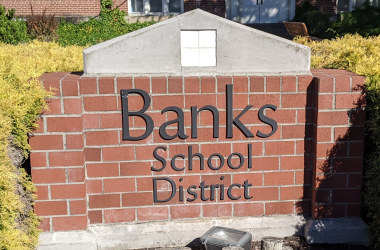This story originally appeared in the Oregon Capital Chronicle and is republished here under a CC BY-NC-ND 4.0 license. Read more stories at oregoncapitalchronicle.com.
The 2020 Labor Day wildfires strained understaffed state and local agencies and highlighted a need for more communication so people can recover and access services, the Oregon Department of Emergency Management concluded in a report released Thursday.
The 147-page report, based on surveys and interviews, offers a window into the state’s work to recover from the wildfires that scorched an area the size of Rhode Island and left communities across the state reeling as thousands of Oregonians lost homes, jobs and their way of life. It detailed shortcomings in the state’s response and included suggestions so officials can better prepare for the next disaster that strikes Oregon.
The wide-ranging report includes examinations of how homeowners received financial assistance for their damaged houses, private fundraising and efforts to provide battered communities with drinking water.
The 2020 wildfires scorched more than 1 million acres in 20 counties, destroyed or damaged more than 5,000 buildings and inflicted more than $500 million of damages across the state. That wildfire season was Oregon’s worst on record.
They coincided with the first year of the COVID-19 pandemic. The confluence of the pandemic and the wildfires partially shaped the state’s response, as officials from across different agencies coordinated virtually at times to share information and map out the recovery. In some cases that helped, but collaboration might have been quicker had agency members been able to meet in person instead of relying on emails and video calls, the report concluded.
Due to the scope of the disaster, more than $550 million has poured into Oregon through Federal Emergency Management Agency programs. That includes nearly $40 million for individual households in Oregon, much of it housing assistance.
The state Department of Emergency Management plays a key role in coordinating resources after disasters, a mammoth undertaking that can involve numerous state and local agencies, community organizations, nonprofits and shelters. The report will provide guidance as the state updates and revises its disaster recovery plan, a document that guides Oregon’s response for a variety of disasters, not just wildfires. That work will take months, but officials are already putting lessons learned into practice.
Now, for example, state officials monitor wildfires before they are within striking distance of populated areas so they can respond quicker if necessary.
“Prior to 2020, we would wait for damages to take place,” said Stan Thomas, OEM deputy director and Mitigation and Recovery Section Division director. “Today we are tracking wildfires that are within what I would consider a fair distance of populated areas.”
Report findings
The report’s findings include:
- Several agencies needed to work together better to respond to shortages of drinking water. Initially, local and state officials had little information about public drinking water systems, how they operated and who regulated them, causing delays in restoring potable water to communities. The agency soon set up a task force across several state and local agencies to restore drinking water, sewer systems and watershed protection to burned areas.
- Economic recovery work among agencies was hampered by requests from different sources, often for the same information but in different formats.
- Economic recovery personnel also reported confusion with directives from multiple sources and competing priorities without a clear command structure. This led to delays, the report said.
- Agencies struggled to reconcile data from different sources, such as property tax records and state records. This led to delays in recovery assistance for property owners. “It also slowed down the initial stages of recovery at the local level, frustrating residents and diminishing trust between survivors and their local government,” the report said.
- The state didn’t have strong connections with local nonprofits and other community organizations, partly because COVID-19 restrictions hampered their ability to meet groups in person. “This led to some inexperienced, unvetted local organizations and organizations outside the impacted area receiving large donations,” the report said.
Next steps moving forward
The report makes a variety of recommendations, including::
- Developing improved ways to share data and information between organizations.
- Creating clear guidelines on what agency takes a lead role in temporary housing and shelter needs and what agency is responsible for long-term housing needs.
- Identify how water needs will be addressed in future recovery efforts and list potential agencies that could play a role depending on the situation.
Challenges related to information-sharing also unfold on a national level during disasters, Thomas said, adding that there are ongoing efforts about how to centralize data collection.
That way, survivors won’t need to repeat their accounts.
“When a survivor talks to the Red Cross or a survivor talks to FEMA or a survivor talks to a state agency, those individual organizations can’t share that personal information without written consent from the survivor,” he said. “We had so many organizations that were getting involved, what we ended up doing was the survivor had to repeat their story 20 times, which is not healthy for the survivor.”
Thomas said the work of putting the recommendations and rewriting the state’s plan could take about a year and involve input from different agencies and people.
The plans are important to prepare Oregon for the next disaster and help communities be resilient, he said.
Another fire season like 2020 is possible, as is any other type of natural disaster, he said.
“As we look to the future and we look at our climate changing, I think that we will have more disasters, and I think the disasters that we have will be more severe,” he said. “I don’t want to look at the crystal ball and see dark skies. However, yes, we could have another straight line wind event and firestorm like we had in 2020. We could have more severe ice storms and winter storms.”






